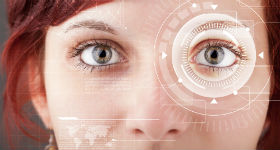Facial recognition continues to be a hot-potato topic for consumer advocates, who want stringent rules around how such data can be collected and used. Its use in commercial settings—for recognizing returning shoppers, for instance, to serve them targeted messaging—has kicked off privacy concerns on several fronts.
The effort to build consensus on that front has faltered though: Nine civil liberties and consumer advocate groups have pulled out of government-facilitated talks with trade associations over determining fair commercial use of face recognition technology for consumers.
The National Telecommunications & Information Administration (NTIA), a division of the Commerce Department, has been hosting the two sides in discussions for almost 16 months now. But privacy companies are adamant about one thing at least: Companies should seek and obtain permission before employing facial recognition to identify individual people in public spaces.
“At a base minimum, people should be able to walk down a public street without fear that companies they’ve never heard of are tracking their every movement — and identifying them by name — using facial recognition technology,” reads the group’s statement, signed by the American Civil Liberties Union; Center for Democracy & Technology; Center for Digital Democracy; Alvaro M. Bedoya, the executive director of the Center on Privacy & Technology at Georgetown University Law Center; Consumer Action; Consumer Federation of America; Consumer Watchdog; Common Sense Media; and Electronic Frontier Foundation. “Unfortunately, we have been unable to obtain agreement even with that basic, specific premise.”
Facial recognition can be used in many ways: Billboards that can silently watch and glean information about their environment, the better to offer up targeted messaging, for instance. If a camera registers a certain team logo on an item of clothing, a display screen at a bus stop can show game-day specials. If there’s a convention in town, tourist attractions can offer discounts to be shown on kiosks when a badge is detected. When certain kinds of cars approach on the freeway, the boards can display refinance offers. On an individual level, true facial recognition can be used for gender- or age-based ad-serving, and could even in theory be used by the government to track individual citizens.
 Image via Shutterstock
Image via Shutterstock
So, consumer groups would ideally like an independent agency, such as the Federal Trade Commission, to propose and enforce tough new rules that ensure that a person has at a minimum full knowledge on how facial recognition will be used and give meaningful prior consent. A self-regulation approach isn’t working, they said, as evidenced by the fact that none of the companies or industry trade associations participating in the Commerce Department-led initiative is willing to support opt-in for facial recognition.
“As CDD has said from the start, the approach the Administration embraced to protect consumers’ rights to their personal information was flawed,” said Jeff Chester of the Center for Digital Democracy, in a blog. “It relied on the data collection and digital marketing industry to support significant new policies that would empower individuals to make decisions about how their information can be collected and used. Right now, of course, it’s individual companies and industry-wide data gathering practices that have left Americans with barely any privacy. For the industry—including Google, Facebook, and Microsoft—what’s foremost in their political agenda is preserving their right to use all our personal information without constraint. It never made sense to expect industry to turn away from business practices that reap billions of dollars.”
So, the CDD and others have decided to leave the talks. Juliana Gruenwald, an NTIA spokesperson, told the New York Times that she thinks the decision to walk away from the table will hurt the interest groups’ cause more than help it. Industry groups intend to continue to pursue a workable code of conduct for facial recognition privacy, with or without the privacy advocates.
“The process is the strongest when all interested parties participate and are willing to engage on all issues,” Gruenwald wrote in an email. “[We] will continue to facilitate meetings on this topic for those stakeholders who want to participate.”
Edited by
Dominick Sorrentino